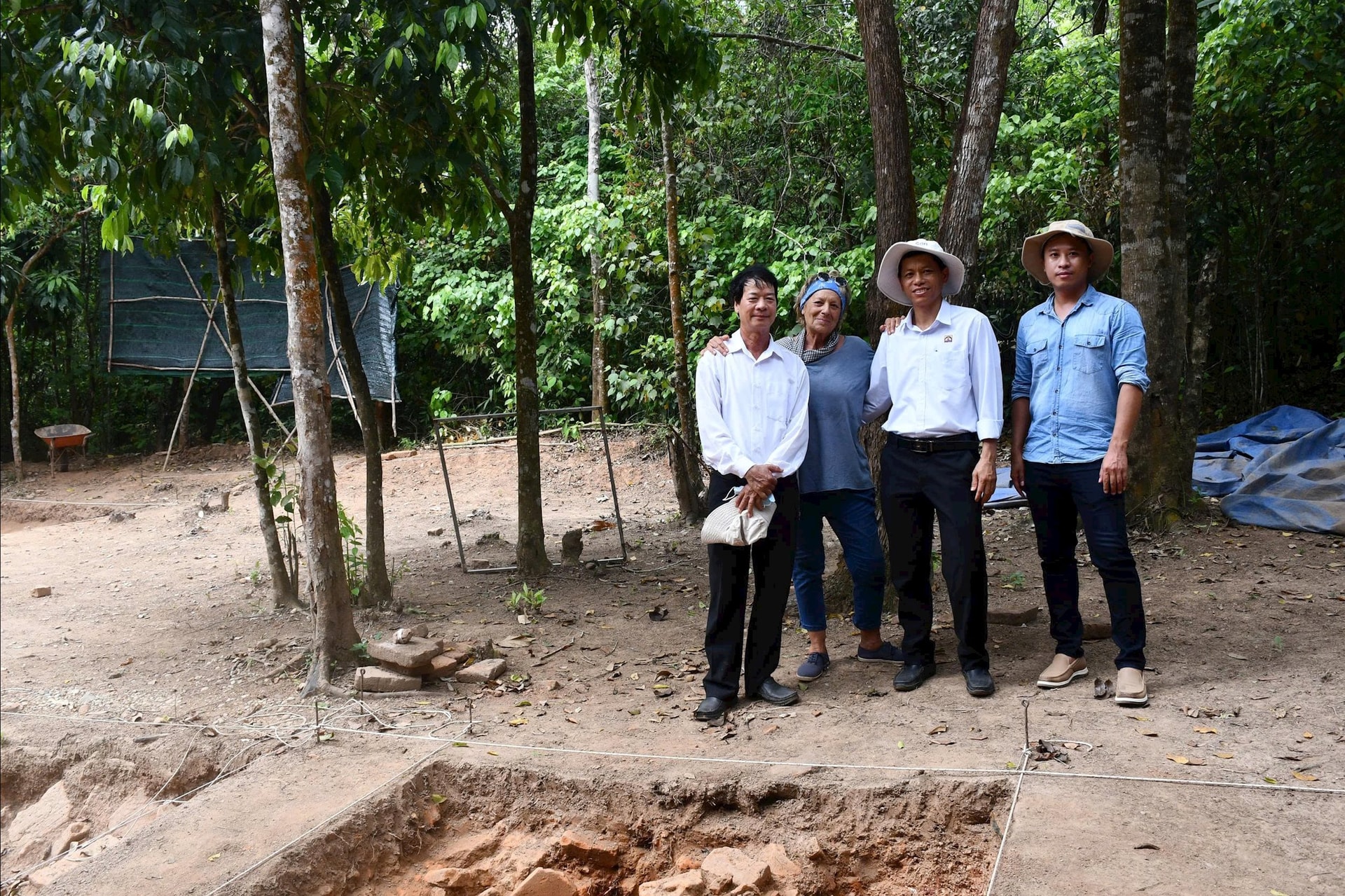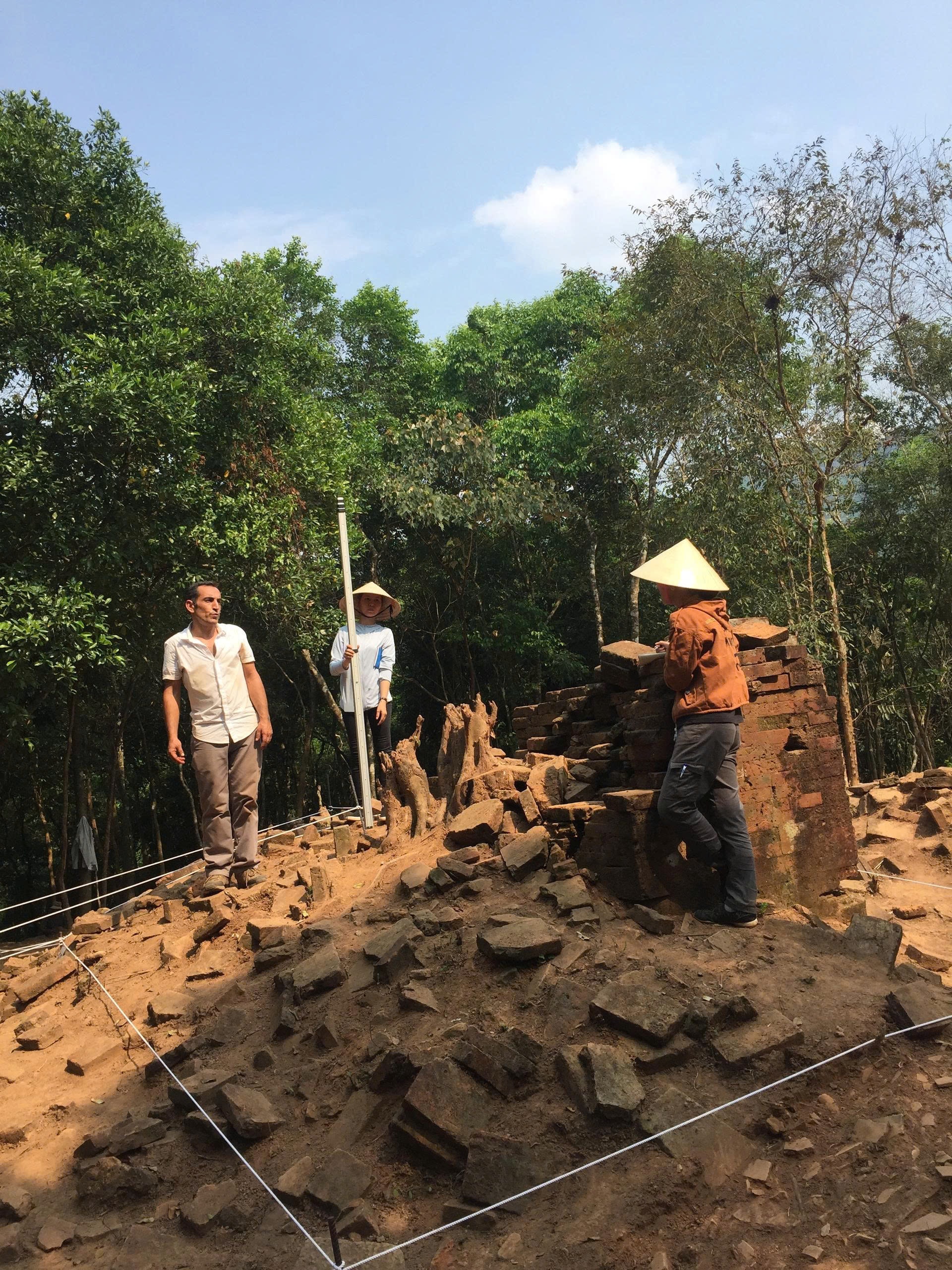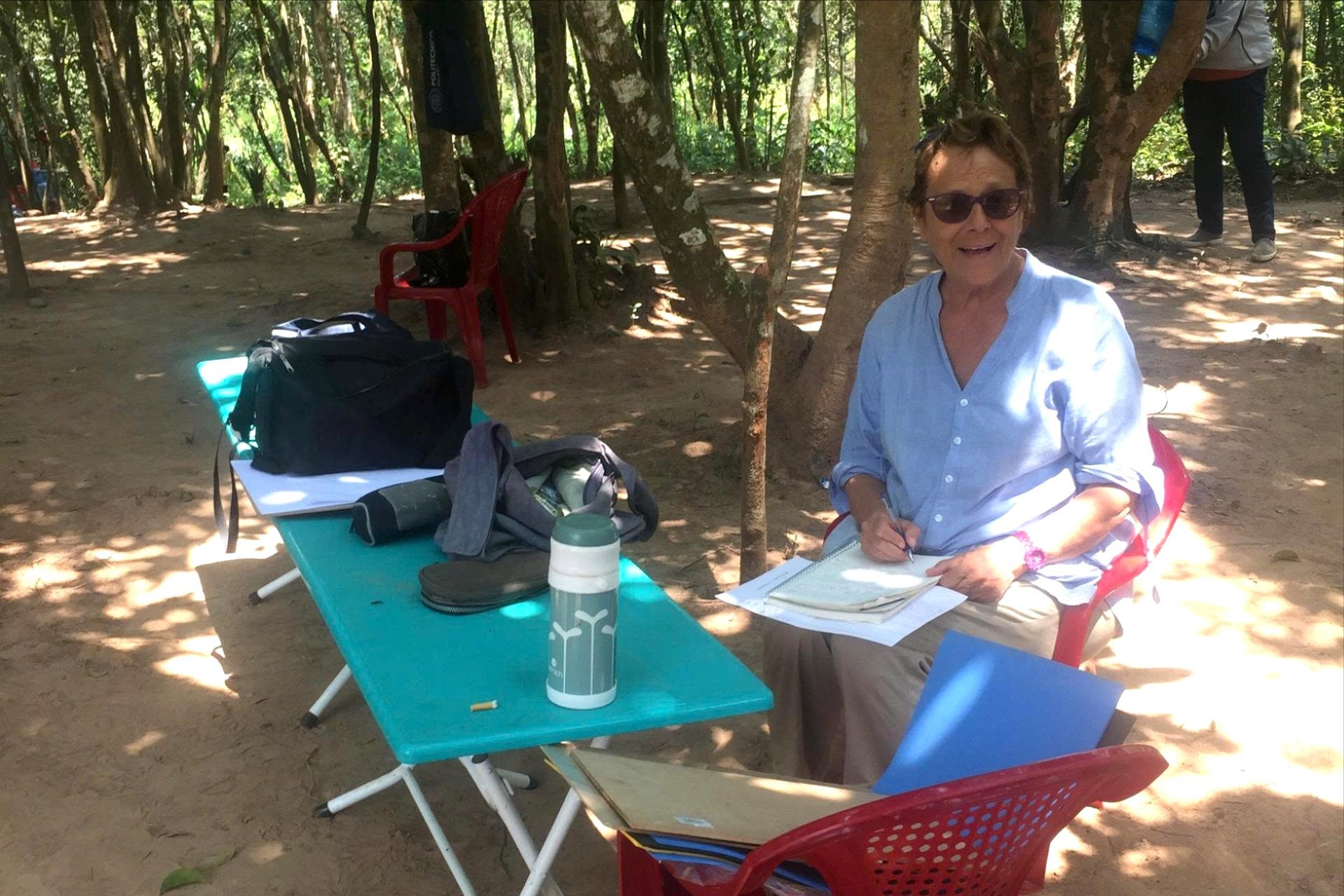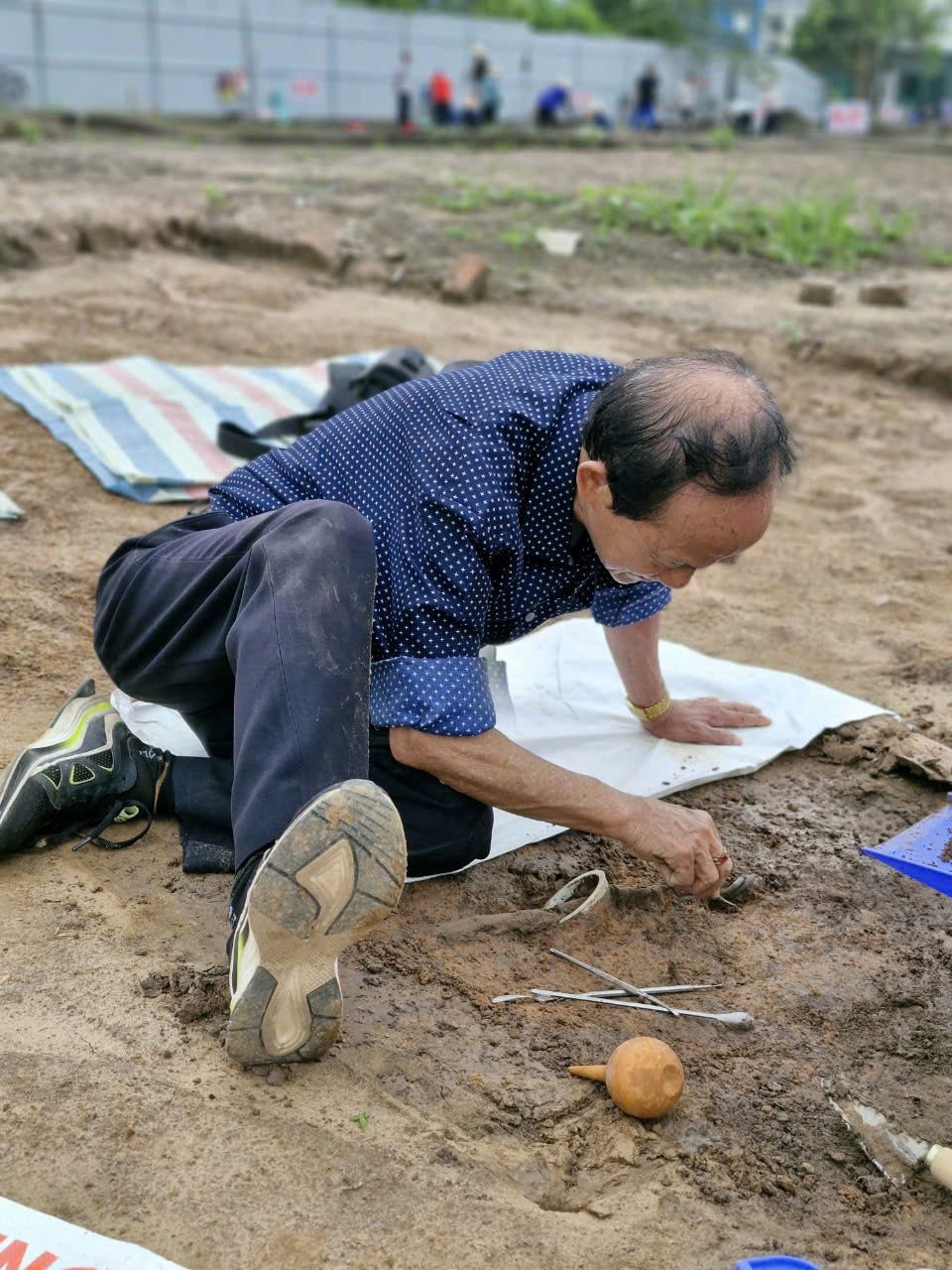
Familiar land
After nearly three decades of wandering in Southeast Asia, Patrizia has “stayed” the longest at My Son. She said the initial motivation came from a UNESCO expert’s reminder: “Look at the ruins to see the destruction of artistic masterpieces by bombs and bullets.” Look to see the tragedy of war on masterpieces, and to understand that restoration is only meaningful when respecting the evidence.
In 2004, from a project coordinated by UNESCO, the Vietnamese Government coordinated with Italy to launch a program of “interpretation and training in line with international conservation standards” for the G tower group. Nearly 10 years later (June 22, 2013), the G tower group opened to visitors. This is the group of towers that experts have assessed as the best restored, retaining the original structure of the relic, and has been chosen as a “model for restoration of future Cham towers”.
For 10 years, Patrizia Zolese and her colleagues quietly “analyzed” the original material. They found similarities between the tar around My Son and the adhesive in ancient Cham bricks. That result paved the way for new compatible bricks produced by artisan Nguyen Qua. Later, Mr. “Qua Cham” was able to make bricks that “speak the same language” as the ancient tower body.

Patrizia and her husband, Dr. Mauro Cucarzi, immediately after the success of the restoration of each group of towers, proposed to the Italian side to establish a vocational training center for restoration in Quang Nam . For them, the relics are only truly safe when there is a native generation with enough skills, discipline and love to take over. And the Italian archaeologists have simultaneously become teachers of restoration.
Federico Barocco (known as Rico) - graduated in East Asian archaeology at the University of Rome, continued studying Far Eastern History & Archaeology at Peking University - set foot in Vietnam at the age of 27, after years of excavations in Laos and Myanmar. Nearly 10 years later, he lived almost entirely in Vietnam. Rico lived in My Son, then gradually moved to Hoi An, opened a small shop named Bazar - Market Street. Since 2016, at the proposal of the Lerici Foundation - Italy and Quang Nam, Rico has been a lecturer at the monument restoration training center for many years.
The Italian restoration experts maintained regular contact with the management team at My Son. They were well-informed about every story and detail of the subsequent excavations at My Son through various channels. It was as if they were implicitly saying that, for them, My Son was a familiar place.
Following the footsteps of ancient Vietnamese
In June 2025, Associate Professor Dr. Nguyen Lan Cuong passed away. He was closely associated with archaeological excavations in Quang Nam.

Remember in August 2014, we had the opportunity to follow him to learn about the second excavation journey at Bau Du site (Tam Xuan commune). Here, Mr. Nguyen Lan Cuong himself participated in the restoration of ancient human remains in Bau Du. The result of the second excavation in this area was the discovery of 6 clusters of ancient human remains, including remains with intact skulls and some limb bones and vertebrae.
We witnessed him sitting silently for hours beside the skull fragments mixed with the “scallop mound”. The Bau Du site is also classified by archaeologists as being in the early Neolithic period, with the name “Scalp mound culture”. He said, only when we fit each joint together, can we hear the whispers of the ancients. The 5,000 - 6,000 year old skulls gradually took shape.
For Associate Professor Dr. Nguyen Lan Cuong, in professional discussions, he always places the archaeological sites of Quang Nam province within a broader context: from Binh Yen (Nong Son) - where international colleagues once excavated sites related to the Sa Huynh people - to the Sa Huynh - Phung Nguyen border line imprinted on… ancient human teeth.

He reiterated the old debate about the culture of scallop dunes: not purely human, but a combination of natural and social impacts. And it was the offshore waves and the thousand-year-old civilization that carved the sites of Quang. The fragments were connected to create the journey of the ancient Vietnamese people from geological strata, eating habits, burial rituals, and coastal transportation methods.
Nguyen Lan Cuong's commitment to excavations in Quang Nam province, and even to excavation and restoration experts from other countries, is ultimately a form of "giving back" to the land.
That is to return the names to each generation of people who once lived on this land, return history to the scallop islands, return depth to Hoi An and Thu Bon.
Tradition or modernity is not as important as honesty before evidence, which archaeology is the first thing to dig up.
Archaeologists and restoration experts from various countries come to Quang Nam, seemingly to pass on a work that never ends: a journey to hear the whispers of the ancients from the depths of the land of Quang Nam, a way of building a foundation for community memory...
Source: https://baodanang.vn/thi-tham-cung-nhung-nen-van-minh-3300860.html



![[Photo] Prime Minister Pham Minh Chinh holds a phone call with the CEO of Russia's Rosatom Corporation.](/_next/image?url=https%3A%2F%2Fvphoto.vietnam.vn%2Fthumb%2F1200x675%2Fvietnam%2Fresource%2FIMAGE%2F2025%2F12%2F11%2F1765464552365_dsc-5295-jpg.webp&w=3840&q=75)


![[Photo] Closing Ceremony of the 10th Session of the 15th National Assembly](/_next/image?url=https%3A%2F%2Fvphoto.vietnam.vn%2Fthumb%2F1200x675%2Fvietnam%2Fresource%2FIMAGE%2F2025%2F12%2F11%2F1765448959967_image-1437-jpg.webp&w=3840&q=75)




















































![[OFFICIAL] MISA GROUP ANNOUNCES ITS PIONEERING BRAND POSITIONING IN BUILDING AGENTIC AI FOR BUSINESSES, HOUSEHOLDS, AND THE GOVERNMENT](https://vphoto.vietnam.vn/thumb/402x226/vietnam/resource/IMAGE/2025/12/11/1765444754256_agentic-ai_postfb-scaled.png)



















































Comment (0)